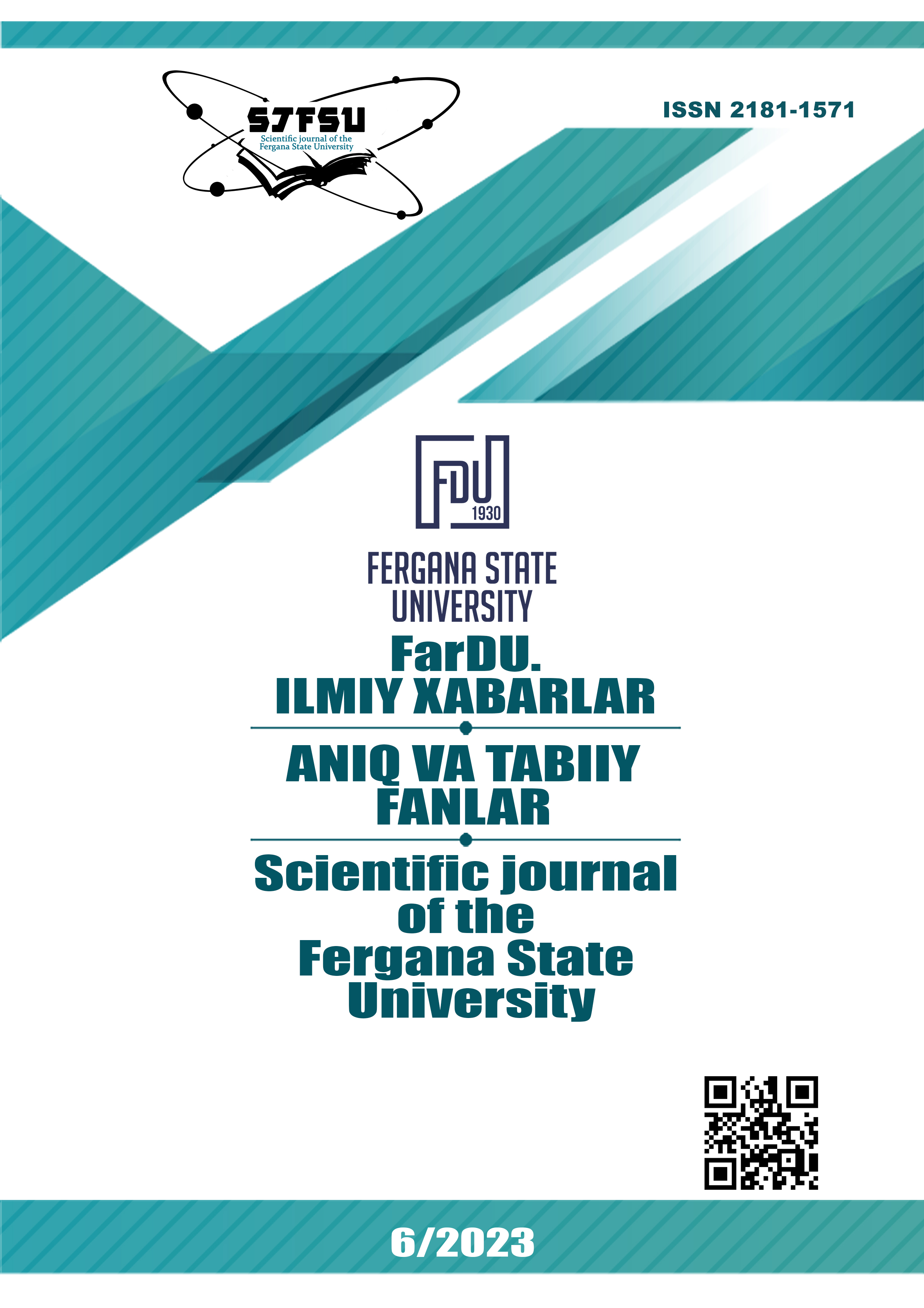COMPARATIVE ANALYSIS OF THE MINERAL COMPOSITION OF LEATHER PRODUCTS OF ANIMAL HUSBANDRY IN THE FERGHANA VALLEY
Keywords:
iron, copper, phosphorus, calcium, aluminum, copper, pigment, silicon, arsenic, magnesium, epidermal layer.Abstract
Use of an Avio 200 ISP-OES inductively coupled plasma optical emission spectrometer, elemental composition and quantitative analysis of animal skin samples. Contains 44 macro- and microelements. The skins of sheep, calves and goats, studied as samples, meet the requirements of the state standard and do not have a dangerous impact on the environment and human health.
References
Dixit S., Yadav A., Dwivedi P.D., Das M. Toxic hazards of leather industry and technologies to combat threat: a review. J Clean Prod. 2015; 87:39–49.
International Trade Centre, http://www.intracen.org/itc/sectors/leather/. Дата бращения 22.05.2022.
Kolomazník K., Adámek M., Andel I., Uhlirova M. Leather waste-potential threat to human health, and a new technology of its treatment. J Hazard Mater. 2008;160(2):514–20.
Hüffer S., Taeger T. Sustainable leather manufacturing: a topic with growing importance.J Am Leather Chem Assoc. 2004; 99(10):424–8.№ 6 (96) июнь, 2022 г. 22.
Beghetto V., Zancanaro A., Scrivanti A., Matteoli., Pozza G. The Leather Industry: A Chemistry Insight Part I: An Overview of the Industrial Process. Sci. Ca’Foscari. 2013;1 :12–22.
Habib A.B., I.A. Noor, A.E. Musa. Effect of some skin defects on physical J. Appl. Ind. Sci.2015;3:112-119.
Vornicu N., Deselnicu V., Bibire C., Ivanov D., Doroftei F. Microscopy research and technique. Microsc Res Tech. 2015;78 (1):70-84.
Расулова М.О., Назаров О.М., Амирова Т.Ш. Определение Содержания Макро-И Микроэлементов В Различных Видах Кожи Методом Масс-Спектрометрии С Индуктивно-Связанной Плазмой // Universum: Химия И Биология: Электрон. Научн. Журн. 2022. 6(96). Url: Https://7universum.Com/Ru/Nature/Archive/Item/13847 (Дата Обращения: 23.11.2023).
Devikavathi G., Suresh S., Rose C., Muralidharan C. Prevention of carcinogenic Cr (VI) formation in leather-A three pronged approach for leather products. Indian Journal of Chemical Technology.2014; 21:7-13.
Rasulova Ma’muraxon Obidjon qizi, Nazarov Otabek Mamadaliyevich. Teri Tarkibidagi Mineral Moddalarning Miqdoriy Tarkibini Aniqlash. FarDU ilmiy xabarlar. № 4. 23.10.2023.96-101.
Bacardit A., Burgh S.V.D., Armengol J., Ollé L.“Evaluation of a new environment friendly tanning process” Journal of Cleaner Production.2014; 65:568-573.
Krishnamoorthy G., Sadulla S., Sehgal P.K., Mandal A.B. Greener approach to eather tanning process: d-Lysine aldehyde as novel tanning agent for chrome-free tanning. J. Clean. Prod. 2013;42:277-286.
Tillet G., Boutevin B., Ameduri B.. Chemical reactions of polymer crosslinking and post-crosslinking at room and medium temperature. Prog. Polym. Sci.2011; 36:191 -217.
Roig M., Segarra V., Bertazzo M., Martínez M.A., Ferrer J., Raspi C. Chrome-free leather, tanned with oxazolidine. Journal of Aqeic. 2012; 63(4): 101 -109.
Sizeland K.H., Wells H.C., Norris G.E., Edmonds R.L., Kirby N., Hawley ., Mudie S., Haverkamp R.G., Collagen D-spacing and the effect of fat liquor addition. JALCA.2015;110: 66-71.
Kolomaznik K., Adamek M., Andel I., Uhlirova M. Leather waste--potential threat to human health, and a new technology of its treatment. J Hazard Mater. 2008;160(2-3):514-520.
Bayramoglu E.E., Onem E., Yorgancioglu A., Reduction of hexavalent chromium formation in leather with various natural Products (Coridothymus capitatus, Olea europaea, Corylus avellana, and Juglans regia). Ekoloji.2012; 21:114-120.
Downloads
Published
Issue
Section
License
Copyright (c) 2024 Scientific journal of the Fergana State University

This work is licensed under a Creative Commons Attribution-NonCommercial-NoDerivatives 4.0 International License.
Most read articles by the same author(s)
- , , , ANALYSIS OF MACRO AND MICROELEMENTS IN PROCESSED ANIMAL HIDES , Scientific journal of the Fergana State University: No. 5 (2024): FarDU.Ilmiy xabarlar jurnali (Aniq va tabiiy fanlar)

